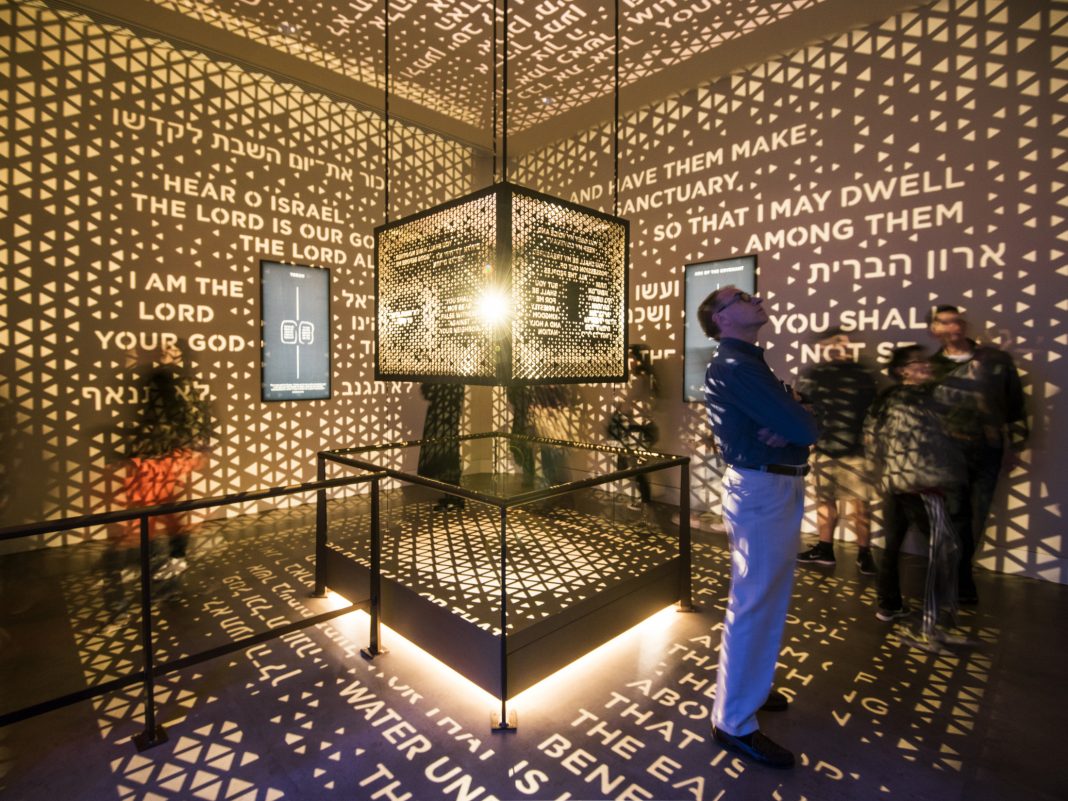SmithGroup workplace strategist, Kerri McShea, challenges the industry to find design inspiration in museums.
Navigating an evolving workplace paradigm, changing workforce demographics and a lagging enthusiasm for returning to the physical office is no easy feat — particularly as the future of commercial real estate remains in flux. To mitigate these challenges, companies continue to explore innovative opportunities to reposition the physical office — and even adjacent amenities — as engaging, interactive and (gasp!) even enjoyable destinations worth frequenting. One space that seems to be offering workplace design specialists newfound inspiration is the world of museums and exhibit design.
Certainly, visions for this new era of office design, functionality and purpose exceed the static displays of times past. Rather, inspiration is derived from the multi-dimensional, immersive exhibits popping up in museums and entertainment venues around the world. Offering a combination of physical space, lighting, sound, art, texture, technology and even scent, these high touch platforms enable users of varied backgrounds, abilities and demographics to come together and engage in a unique shared experience.
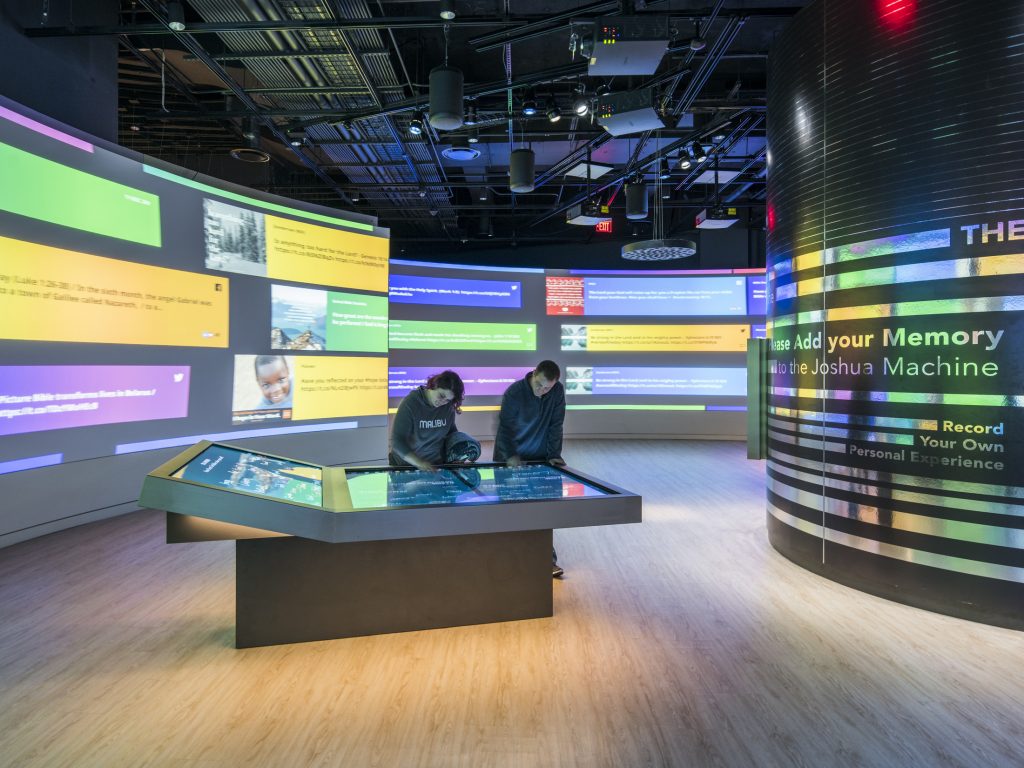
Immersive Exhibits
One reason immersive exhibits are growing in popularity stems from recent societal shifts whereby people around the world are placing increased value on lived experiences as opposed to material items. This shift has also been expedited by the continued rise and evolution of social media and advancing technologies which enable generations of users to share stories about their experiences on Instagram and other visually rich platforms. But the most compelling observation regarding the growth in this multi-sensory storytelling medium was perhaps expressed by Leng Lin, president emeritus of Pace Gallery Asia, when he attributed the popularity of immersive exhibitions to:
“a basic human desire to feel wonder.”
Creating a “Wonder-full” Workplace
If experiencing wonder is truly a basic human desire, why then do we create boundaries that seem to limit “wonder-full” opportunities to personal time and activities? What prevents us from bringing a sense of wonder into the workplace? Imagine all that could be achieved in an office where technology affords employees unfettered opportunities to collaborate and share in “exclusive” curated experiences that far surpass the 2-dimensionality of video calls, computer work and phone scrolling that dominate workplaces elsewhere.
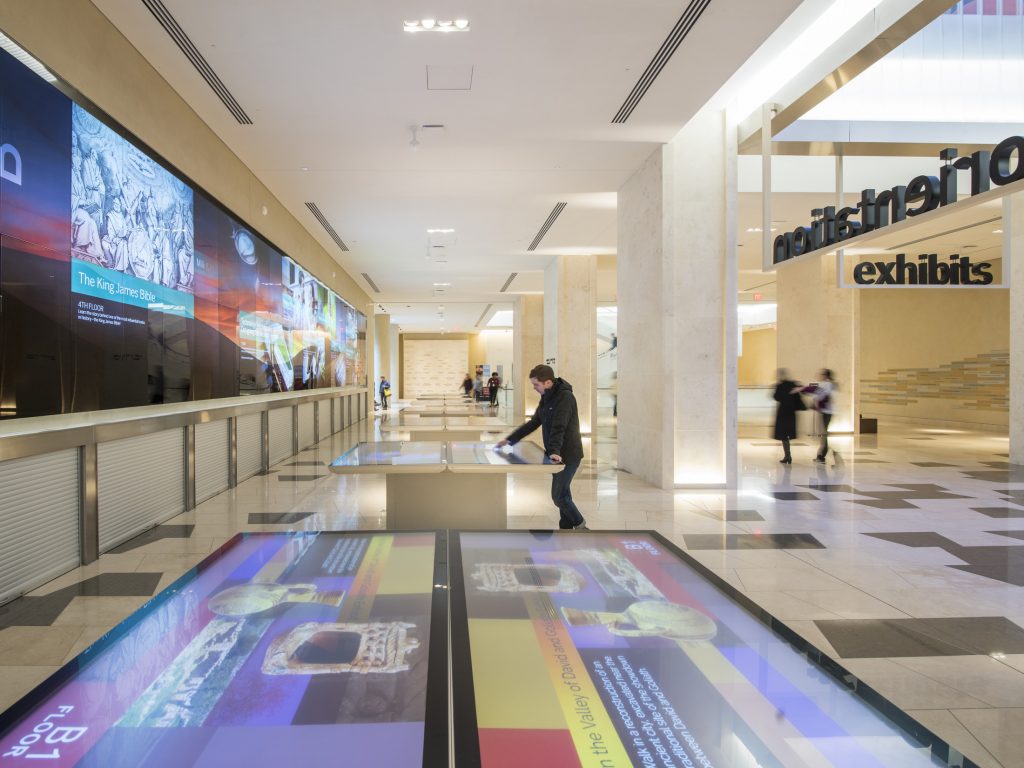
Communication, Connection & Purpose
Certainly, immersive applications are well-suited for communicating a company’s mission, vision and history, but they can also be utilized to create uniquely branded experiences that instill (or reinforce) a sense of purpose and connectivity within employees — as individuals and as a collective group. Never before has purpose been more important, both in the context of employees believing that their work is contributory and has a positive impact in the world, as well as in the context of helping employees find a meaningful purpose for coming to the office.
Exploring Options – Finding Your Fit
Creating immersive experiences that foster purpose centers on weaving together stories and experiences, facilitating participation and inclusion, and eliciting meaningful interaction between an individual and the exhibit. Multisensory displays can be incorporated into a workplace in many forms and can be designed to accommodate varying degrees of interactivity, technological integration and cost. Companies desiring a highly technical exhibit may choose to incorporate virtual reality, augmented reality, layers of massive projections or a combination of other high touch components.
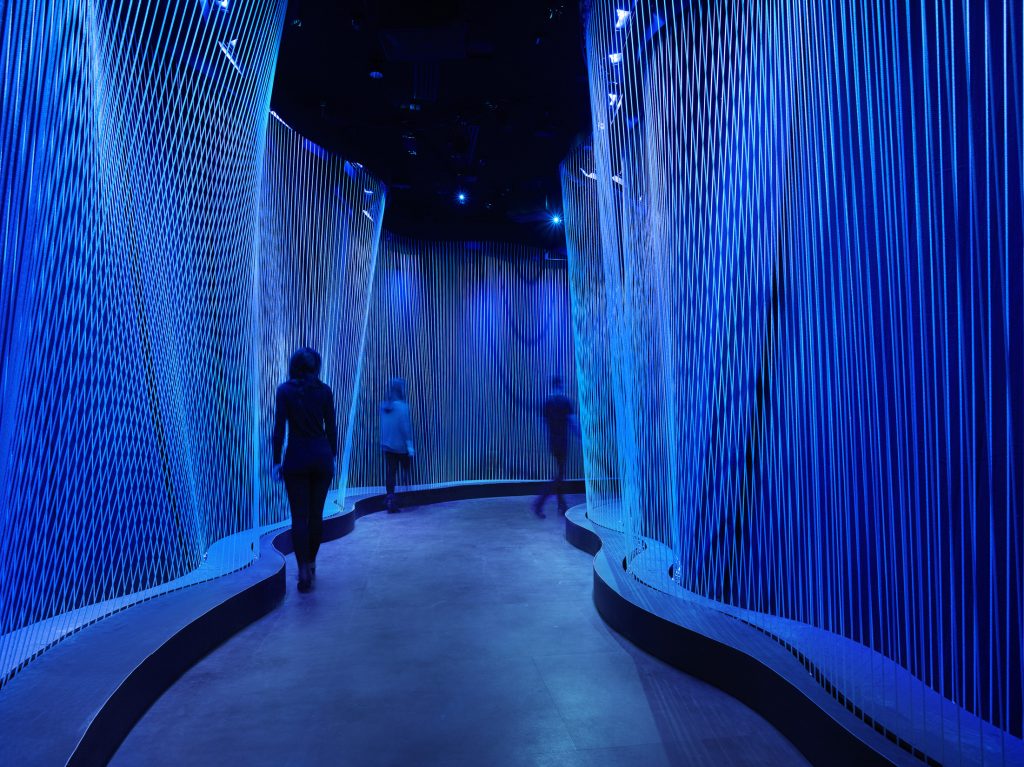
Other organizations may instead create experiences involving gamification, writable surfaces, interactive LED displays, sound beaming or projection mapping. Light, sound and even smell can be used to achieve desired mental, physical and emotional objectives within certain spaces – some spaces might be designed to soothe and calm, others could be intended to help stimulate and energize. For those looking for subtler, more lo-fi experiences, a hallway might be lined with displays that change in response to user movements, or mirrors and prisms could interplay to convey the transient nature of the space.
Immersive experiences are also known to spark creativity by encouraging play, engaging imagination, disrupting daily patterns that stagnate innovation, and transforming our brains and behaviors. Regardless of which type of immersive display is best suited for a company, the end goal is the same: to bring people together to create community and establish social bonds through active engagement and shared experiences — all of which are beneficial to employee engagement, wellbeing and productivity.
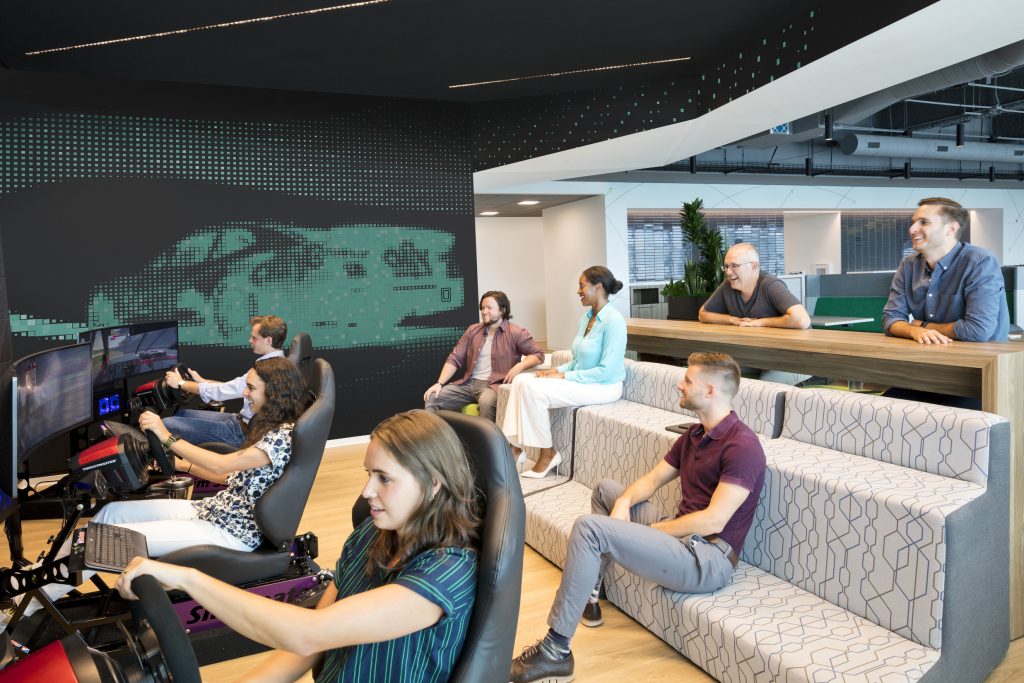
Bold Benefits for Bodies and Brains
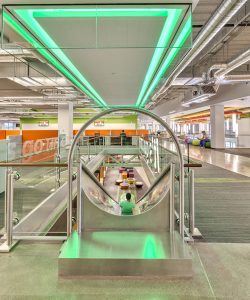
It is understandable that some organizations may be hesitant to invest in, well, playfulness in the workplace. However, play, in any form, has been shown to boost creativity in adults. SmithGroup clients have incorporated a range of immersive and playful activities into their spaces as innovative means to enhance collaboration, relationship building and more. These elements have included virtual golf simulators, an interactive NASCAR experience, gaming rooms, slides, indoor bicycles, music rooms, meditation rooms and more.
Additionally, research within the emerging field of study of neuroarts has linked active spatial engagement to transforming people’s body, brain and behaviors. Beyond the arts, enriched environments contribute to promoting neuroplasticity, which is the creation of new neural pathways and growth within the brain. Immersive experiences in many shapes and forms can result in greater creativity, innovation and productivity.
Strategy & Implementation
Incorporating immersive and experiential elements into an office doesn’t have to be an extravagant, all-or-nothing deal. Multisensory displays can be designed to span a spectrum of sizes, applications and engagement opportunities with varying degrees of technology integration and cost. Companies can explore implementing exhibits throughout the workspace and strategically invest in areas that make the most sense. For example, digitally immersive experiences may be prioritized in public facing spaces such as entryways, the reception area or advanced collaboration rooms. Sound and light applications may be implemented in select employee areas, while more interactive, immersive games may be better suited for social spaces.
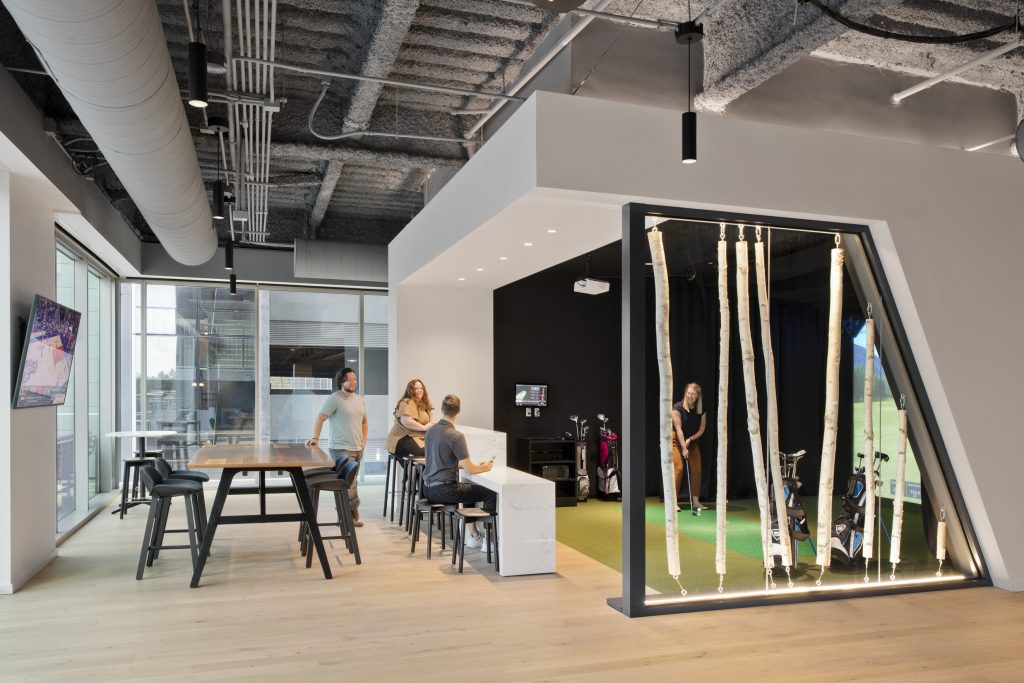
Be prepared — once employees get a taste of an office outfitted with immersive exhibits, they will want more. Implementation strategies should include plans to refresh exhibits (in some form) at regular intervals. Updates can be as simple as varying content shared via displays, changing colors and sounds or reconfiguring physical objects — moveable walls, furniture, kiosks, displays — throughout the year. Changing the experience over time will continually build (or sustain) curiosity and excitement about what is next.
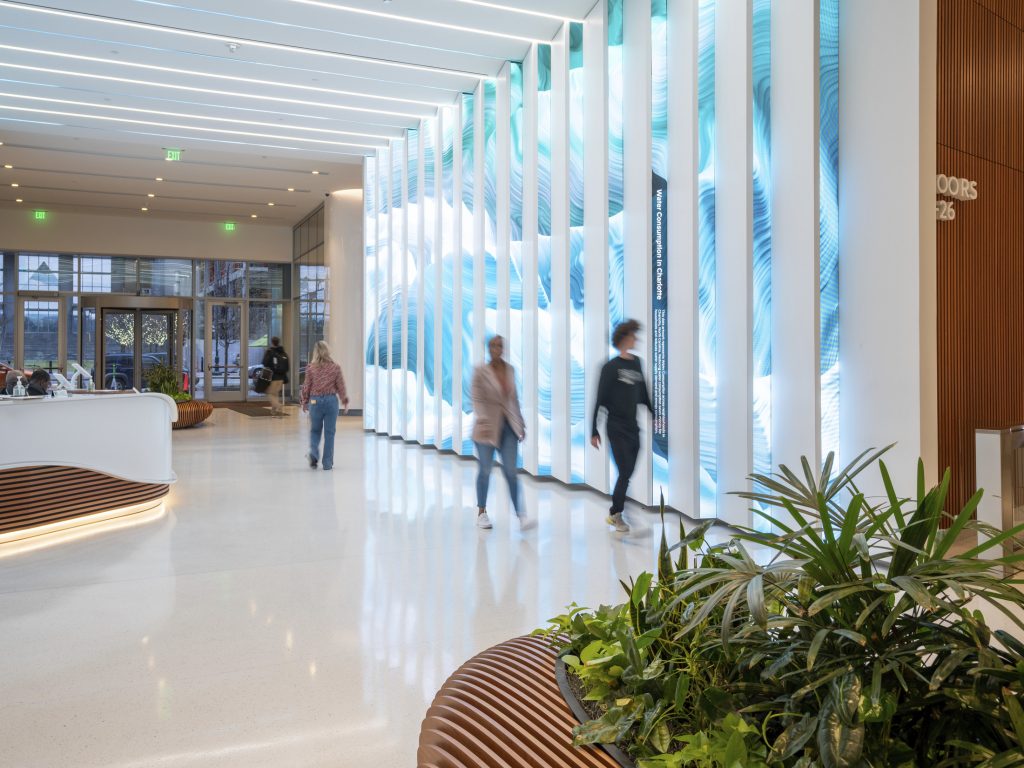
“Exhibiting” Enthusiasm in the Office
For decades, museums have applied immersive techniques to create multisensory exhibitions that enable visitors to “step into” an era or experience a phenomenon. Now, as designers, it is time to apply this approach to the creation of next-generation office environments that prompt interpersonal interactions and create positive, memorable workplace experiences. Companies that value and invest in opportunities to experience wonder, creativity and engagement within the workplace will capture the attention of current and prospective employees and clients. Organizations that thoughtfully incorporate experiential opportunities into their workplace today will see the success well into the future.

